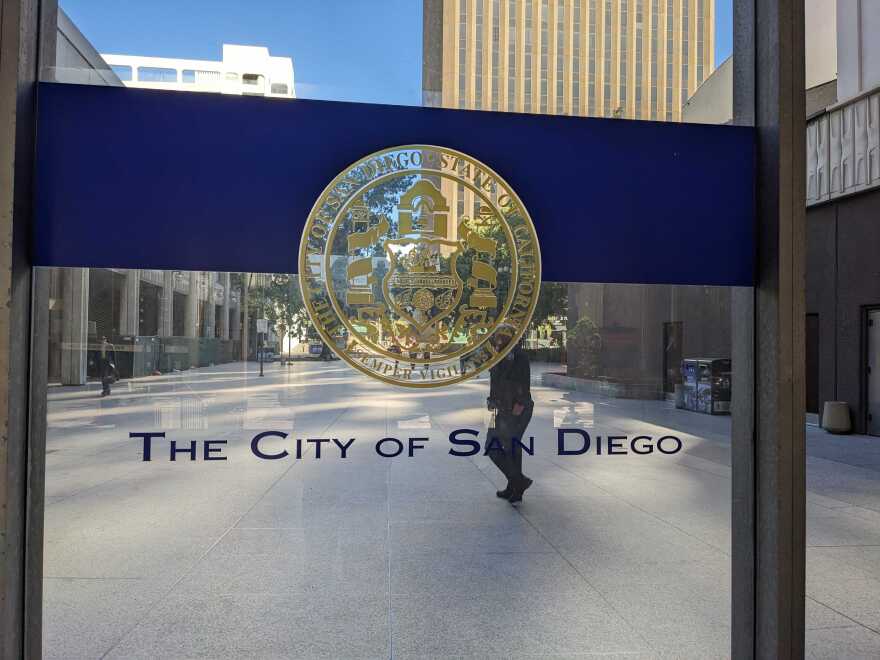Wide-ranging updates to the city's development regulations were approved by a 5-4 vote by the San Diego City Council Tuesday, including changing the boundaries for certain home construction incentive programs.
This move is intended to increase the amount of developable land near major public transit stops.
Circulate San Diego's Colin Parent said the change will help San Diego meet its affordable housing and climate goals: To get 15% of people living near transit to actually use it.
“The biggest thing that this is going to accomplish is it's going to expand the universe of land near transit that's going to be able to take advantage of some of these innovative housing programs from the city of San Diego,” Parent said.
This construction can now happen when the transit line is as far as 1 mile away on a walkable path. Previously, it was a half mile measured as the crow flies.
"The new definition of Sustainable Development Area aligns development with the city's Climate Action Plan goals to expand housing near transit so more people can bike, walk, roll or take transit to their work, home, shopping and other places of enjoyment within their community," said the city's planning director, Heidi Vonblum.
"At the same time, it furthers fair and affordable housing opportunities in our city that desperately needs it."
Every year city staff updates the city's land development code, with draft updates including clarifications, corrections, regulatory reforms and changes to the regulations to "bring the city into compliance with state law and advance the city's housing and climate goals," a city statement reads.
Neighbors for a Better San Diego Chair Geoff Heuter is frustrated with the update.
His organization advocates for single-family homeowners.
“We should be pushing development into some sort of critical mass of transit corridor development instead of just smearing all new development across – what we calculate is – over half of all the area of San Diego,” he said.
Heuter said most people won’t walk a mile to transit, but City Council president Sean Elo-Rivera disagrees. He voted in favor of the policy change.
“I understand some of those concerns and believe that those can be accounted for through additional planning and investment in the micro-mobility, and the first and last mile options that our office had advocated for before and is going to continue to advocate for,” Elo-Rivera said.
Among the 78 items adopted Tuesday is the changed definition for Sustainable Development Area — replacing the definition of Transit Priority Area. Properties within these areas are eligible for the city's local incentive programs like the Complete Communities Housing Solutions program and the Accessory Dwelling Unit density bonus program intended to encourage building more homes near transit.
District 1 Councilmember Joe LaCava voted no on the update, saying he felt the changing definition for Sustainable Development Areas was too sweeping to be part of a bigger, largely technical, package.
"I voted no because one amendment, the proposed Sustainable Development Areas and their benefits and impacts — like transit accessibility, mobility patterns, Climate Action Plan alignment and truly affordable housing — do not belong in an annual update," LaCava said.
"SDAs reflect a substantial shift in policy. SDAs may have a role in meeting our housing needs and must be deferred to the upcoming Housing Action Package 2.0 which warrants additional analysis and discussion about our future transit, mobility, and infrastructure goals."
LaCava also voted no on this item for the same reason at the Jan. 12 Land Use and Housing Committee meeting.
The previously-used Transit Priority Areas allowed for the incentive programs to be used within a half-mile radius of an existing or planned major public transit stop. According to the previous boundaries, the distance was measured in a straight line, so barriers to accessing transit, like canyons and freeways, which may have realistically made access to transit miles away, were not considered.
Dozens of residents spoke on the issue at Tuesday's council meeting, with many splitting over this new definition and whether a mile was indeed "walkable."
City staff said the change will increase the potential developable areas by more than 5,200 acres while also removing other areas that would otherwise be less accessible to public transit.
San Diego will still use the California's definition of Transit Priority Areas for other state-mandated incentive programs, the city statement read.
Additionally, developers will be able to use the local incentive programs under the city's definition of a Transit Priority Area for a full year after the latest Land Development Code Update takes effect.





